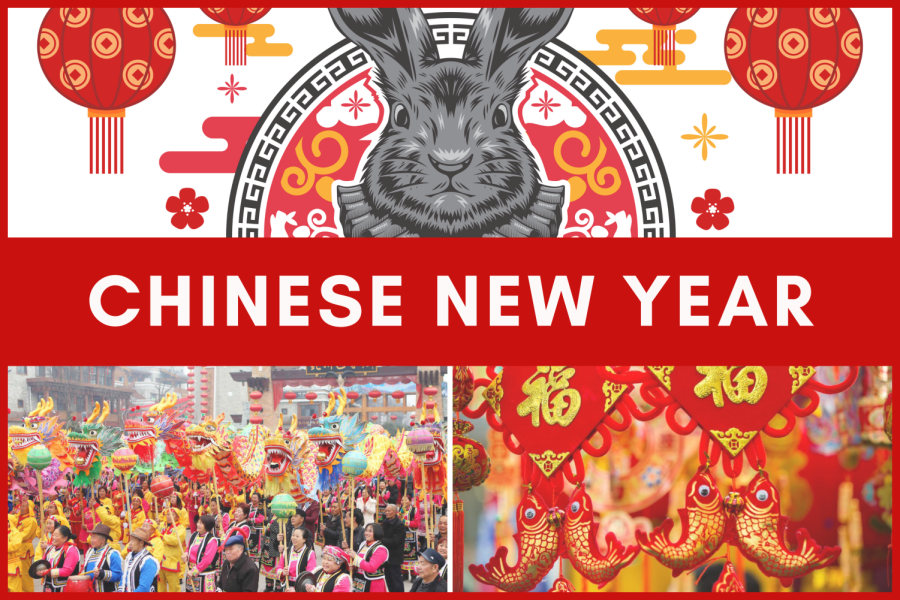Chinese New Year: a global celebration of culture and history
Chinese New Year can trace its roots back nearly 3,500 years, allegedly originating in the Shang Dynasty when people held sacrificial ceremonies at the beginning or end of each year.
This past Sunday, millions of people around the world celebrated the Lunar New Year, bursting fireworks, spending time with family and friends, and commemorating the holiday with additional displays of traditional Chinese culture.
The colorful celebration began on the first day of the year in the Chinese calendar (January 22). Being 16 days in length, it will come to a conclusion with a full moon and traditional lantern festival.
“We typically go to my uncle’s restaurant with a bunch of friends and we all eat a bunch of good food. For me, it is just a fun time to get to see family I do not normally see. In China, we usually have fireworks, and we go out to our neighbor’s house. It is more of a bigger celebration in China than in the US,” said Cindy Xing (‘24).
The legend of Lunar New Year
According to legend, the Lunar New Year is associated with the monster Nián, a creature with sharp teeth that caused chaos every 365 days. As a matter of protection from said monster, villagers would often create a feast and pray to their ancestors for safety.
Additionally, firecrackers were used to scare the monster away and prevent it from returning to the village. Traditional holiday decorations are therefore usually bright and red, believed to be frightening to Nián whilst kindling good fortune for all.
“When I asked my parents and grandparents, they explained to me that they celebrate Chinese New Year mostly to invite peace and prosperity into the family home, and pray for good fortune in their lives,” said Bill Situ (‘24).
Customs around the world
The Lunar New Year is celebrated in Chinese culture as well as select Vietnamese, Tibetan, Taiwanese, North Korean, and South Korean communities. Also, communities with large Chinese populations have adapted the celebration in light of their respective traditions.
“When I was a kid, my best friend celebrated Chinese New Year and I remember him giving me a red envelope. He told me stories about firecrackers and dragons. It is a big deal in the Bay Area, because we have such a large Chinese population,” said World History Teacher Antonio Yovino.
As a part of the celebration, those who celebrate partake in lion/dragon dances, temple fairs, flower markets, incense worship, and more. Also, many families redecorate their homes in light of the new year with red couplets, lanterns, new flowerpots, fresh furniture, and additional cultural elements.
“My favorite tradition, along with many Chinese kids, are the red envelopes. Essentially, your family members give you an envelope full of money to symbolize good fortune, good health, and prosperity. Red is a very specific color for this celebration. It represents luck, prosperity, and peace,” said Situ.
At the end of the day, Lunar New Year is an amazing time for people around the world to spend time with loved ones, celebrate the wonders of Chinese culture, embody their generational traditions, and create memories meant to last a lifetime.
Your donation will support the student journalists in the AVJournalism program. Your contribution will allow us to purchase equipment and cover our annual website hosting costs.

